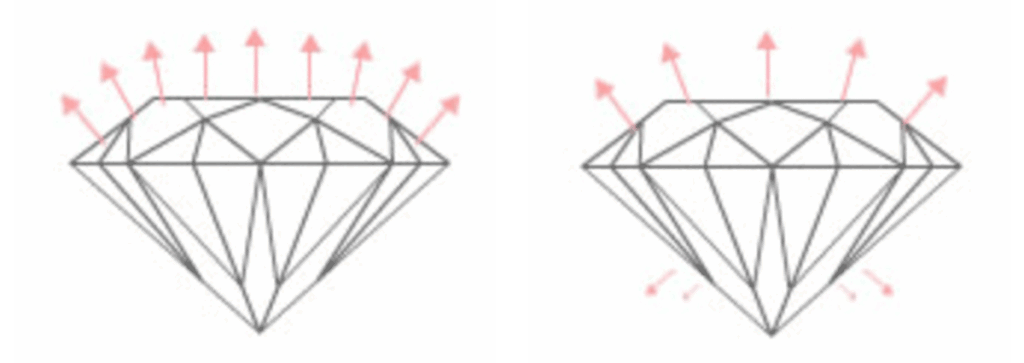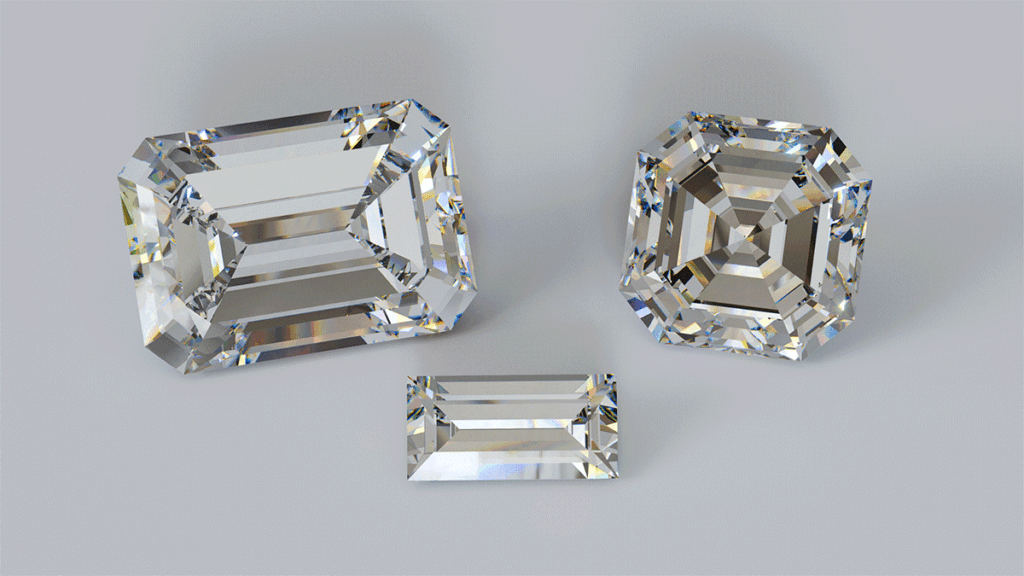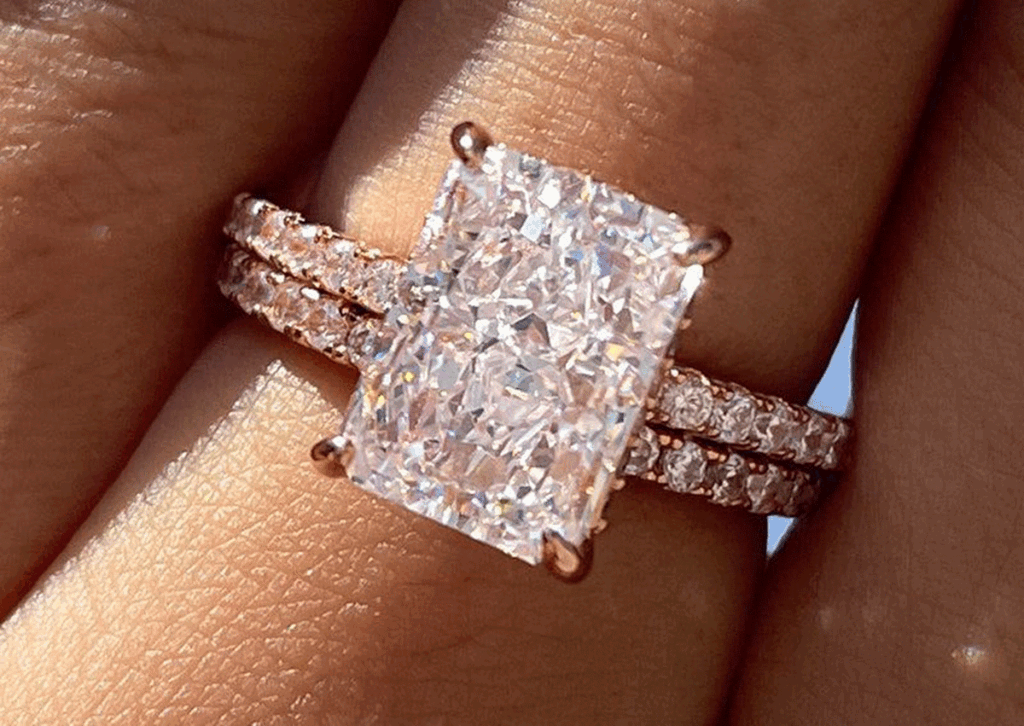There are several things to look for when buying a diamond such as color, carat, clarity, shape, cut, fluorescence, and certificates, among others. But the diamond cut is the most critical characteristic to look into. Why? Because everything rests on how well a diamond is cut. Fortunately for you, this guide to diamond cut quality will give you an edge over those who know not much.
Guide to Diamond Cut Quality
What is diamond cut? Diamond cut is how a stone is physically cut into the desired shape. It is often mistaken for diamond shapes such as round, oval, pear, emerald, etc. Diamond cut deals with a diamond’s facets and how symmetrical and proportionate they are; how they are rationally angled to provide optimal light dispersion. Diamond cut affects a stone’s quality and price.

A good cut impacts a diamond’s optical and physical properties like
- Luster – is the quality and amount of light reflected off the surface of the gem. It is a function of the hardness of the stone and the quality of its polish.
- Brilliance – is the amount of white light reflected back to the eyes from both the internal and external surfaces of the diamond. Brilliance is dependent on the diamond’s polish and the inclusions inside the diamond. The lesser the inclusion, the more brilliant a stone is.
- Dispersion – refers to the display of colors from inside the stone. This is often referred to as “fire,” and is caused by a stone’s proportions.
- Scintillation – or sparkle occurs when a diamond is in motion.
The bottom line is that the dazzling beauty of a diamond depends more on the cut than any other factor.
Diamond Cut Styles
Diamonds from the mines are called “rough diamonds” and look very different from the brilliant and sparkly gems on engagement rings. They reveal their clear beauty within after they are cut. The cutting process removes unwanted weight, thereby decreasing its carat size. Good cutting, therefore, results in the right balance between preserving the stone and having an excellent cut.
There are currently three diamond cut styles. These are:
Brilliant cut
The round brilliant-cut diamond has many triangular and kite-shaped facets spreading outwards from the center of the stone.

This cut style was first introduced by Marcel Tolkowsky in 1919. Today, it is the most common diamond cut in the market.
Step cut
Step cut diamonds are either square or rectangular with facets parallel to each other. The facets are all cut on all four sides of the stone with a flat surface on top. These facets would look like steps descending from the surface when viewed from the top.

They have fewer facets, hence they aren’t as sparkly as the brilliant-cut. But they do have a clean, sophisticated look, almost like a mirror. Good examples of a step-cut diamond are the emerald, Asscher, and baguette.
Mixed cut
This is more commonly called a “hybrid cut” because it has a combination of brilliant and step cuts. For example, the radiant cut is the most popular example of a mixed-cut style. They are typically elongated but with brilliant-cut facets to make them sparkle.

A radiant-cut diamond has the silhouette of an emerald shape but with facets more similar to round-cut diamonds.
What is the Best Cut Grade for a Diamond
The most popular diamond in the market is the round brilliant. In fact, experts estimate that the round brilliant accounts for 70% of all diamonds sold today. Hence, where the cut grade is considered, the basis is the round brilliant.

Some diamond experts believe cut is the most important C in diamond quality. So if you are wondering which quality of diamond is the best, go with the experts and focus on the Cut quality. A well-cut round brilliant has that unmistakable, stop-in-your-tracks light show that can be seen from across a crowded room. If a diamond is well-cut, you can compromise on clarity, color, and even carat weight. Additionally, cut grade indicates how well a diamond is designed and crafted.
So what is a cut grade?
Cut grade or, more precisely, the cut grading system, is GIA’s method of grading cut that will optimize how light behaves within a round brilliant-cut diamond. This cut grading system is not a result of some arbitrary way of classifying cuts, but a product of more than 15 years of experiments and field observations to understand the factors that contribute to a round brilliant’s appearance.
GIA’s cut-grading system evaluates the following:
Diamond sparkle and face-up appearance
One of the key components of diamond cut grades is its face-up appearance—how the stone looks when viewed from the top, like in an engagement ring. This is the view most people would first look into, right?
Viewers would love to see a ring’s interplay with light, which most would call “sparkle.” And this is where you need to be clear on.
The internal and external white light reflected from a diamond is called “brightness.” If you see light scattered into all the colors of the rainbow, that is called “fire.” What most people refer to as “sparkle” is actually “scintillation,” the pattern of bright and dark areas caused by reflections within the diamond as it or the light source moves. Sparkle is the overall visual effect of these three factors.
The face-up view will show all the attributes of brightness, fire, and scintillation of the well-cut diamond.
Proportions
A diamond’s proportions can help predict how well the stone creates brightness, fire, and scintillation. It involves the relative measurements of a diamond’s crown and pavilion and the relative measurements of its facets.
Bear in mind that facets are like tiny mirrors the size of the placement of which will influence how light behaves as it passes through the diamond.
And all these contribute to a diamond’s face-up appearance.
Note of warning: per GIA’s studies there is no single set of proportions that define a well-cut round brilliant diamond. In fact, some diamonds may look and perform differently, yet have the same effect on an observer. So as a shopper, be sure to have a first-hand view of the gem you intend to buy to be able to make a good decision.
Design and craftmanship
The face-up cut grade criteria deal with how a diamond looks to an observer, while design and craftmanship deal with the manufacture of a diamond.
Poor design could add unnecessary weight, or cause durability issues. And poor craftsmanship won’t deliver much brightness, fire, and scintillation.
GIA Cut Grading System evaluates these two components by considering a diamond’s physical shape, proportions, weight ratio, and the care that went into fashioning and polishing its facets.
Design
Design means all the decisions made during the fashioning process to determine what the diamond’s physical shape will be. It takes into account its proportions, weight ratio, and durability.
Diamond weight ratio is its weight divided by the girdle diameter (GIA considers this a fairly complex mathematical equation). This is important because a diamond with a small girdle diameter relative to its weight will appear smaller face-up because much of its weight is hidden in the overall depth of the diamond.
To get a better idea, think about this: a diamond with a thick girdle may look great, but the girdle is hiding unnecessary carat weight. In a case like this, you will be paying more for a heavier diamond with no visual impact for the added cost.
The bottom line is that a diamond should not weigh more than its face-up size indicates.
Another aspect of Design is durability—which refers to a diamond’s resistance to damage. And where durability is concerned, the focus is on the girdle. An extremely thin girdle of a round brilliant cut makes the diamond highly vulnerable to damage during setting or normal wear.
A case of Catch 22
A diamond is expensive—both in money terms and emotional significance. Hence, it should not be purchased as an afterthought. Careful planning, and knowledge, must be put into its purchase—even with respect to the girdle. Buying a gem with a thick girdle will be an added expense with no real value. Or risk damaging the stone due to normal wear if the girdle is too thin. To eliminate this concern, don’t take GIA’s Diamond Grading Report for granted. Carefully study it.
Craftsmanship
Craftsmanship is the manner, care, and skill that goes into fashioning a diamond into a finished product—as seen in its polish and symmetry.
Polish is the overall quality and condition of the facet surfaces. It includes the handling of blemishes created by the polishing process or during normal wear. This is very critical to the mirror-like performance of a diamond’s facets.
Symmetry, on the other hand, is the exactness of a finished diamond’s shape, arrangement, and placement of its facets. A symmetrically-cut diamond shows an even display of brightness, fire, and scintillation. Conversely, diamonds with poor symmetry have poor light performance; they look flat and dull.
Diamond cut grades
Based on the above, diamond-cut is graded Excellent, Very Good, Good, Fair, and Poor.
How Can You Tell the Quality of a Diamond Cut?
GIA evaluates round brilliant-cut diamonds based on brightness, fire, scintillation, weight ratio, durability, polish, and symmetry. Based on its evaluations, a diamond cut is graded as Excellent, Very Good, Good, Fair, and Poor.
Overall grading is set by the lowest assessment of a particular diamond in five of the seven components. Polish and symmetry are graded separately using GIA’s standard grading methodology.
So, for example, a diamond graded Poor in brightness will have an overall cut grade of Poor even if it is excellent in other aspects. On the other hand, a diamond graded “Very Good” in polish and symmetry, may receive an Excellent cut grade.
Diamonds purchased through reputable dealers always carry a GIA or AGS certificate, which includes, among others, a diamond cut grade certificate, which contains a diamond’s full assessment. It even includes a diagram showing a diamond’s proportions, and relative measurements.
Here’s a word of caution though if, from somewhere, you are inclined to pit diamond cut ideal vs excellent.
Both are the same. The ideal-cut grade is issued by the AGS (American Gem Society) while the Excellent cut is used by the GIA. On the physical side, an ideal cut diamond is a round brilliant, or princess cut diamond that is cut to ideal proportions and angles; with excellent polish and symmetry ratings.
Though not related to cut, you might wonder what is the best cut clarity and color for a diamond?
Excellent is the best diamond cut. While clarity is still the FL (flawless). And where color is concerned, go for the D.
The Bottom Line
In arriving at its Cut Grading system, the GIA left no stone unturned to determine what factors, or combination of factors, will make a round brilliant diamond attractive to a lot of people. It conducted several kinds of research and used computer modeling to analyze tens of thousands of possible combinations to arrive at the ideal diamond cut. Not only did it confine its studies inside its laboratories, but it conducted no less than 70,000 observations on human subjects.
The bottom line is that this cut grading system is not to be trifled with and if you want to get your money’s worth out of your purchase, study the GIA certificate.
But just like everything else in life, there’s a caveat…
While knowing a diamond’s cut grade report is great, it should not be a substitute for doing an inspection of the diamond yourself. As mentioned above, diamonds, though look same way, perform very differently. It’s because no two people can assess the same thing the same way. Everything is judgmental.
Another thing is the ambient light. A certain diamond will look different under different lighting conditions.
So to choose one that is perfect for you, you need to put it on. Take it for a “test drive” so to speak. Feel its impact on your deepest instincts. See if it resonates with your deepest emotions. Let your heart decide.
